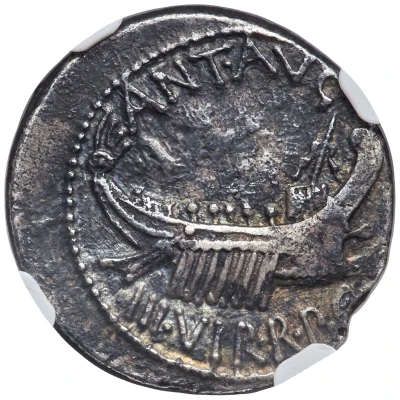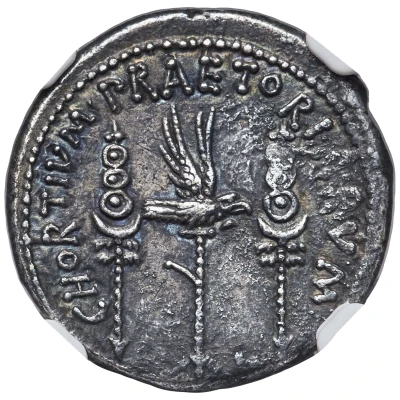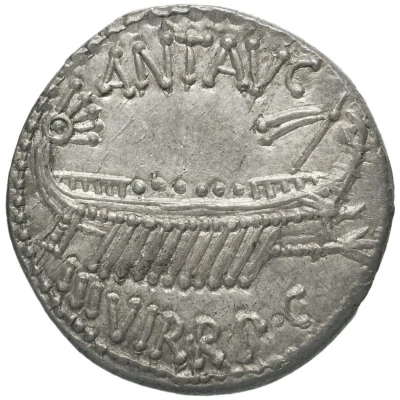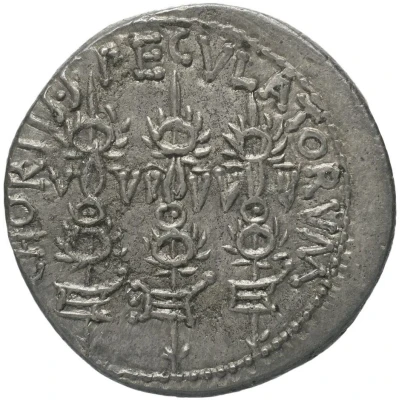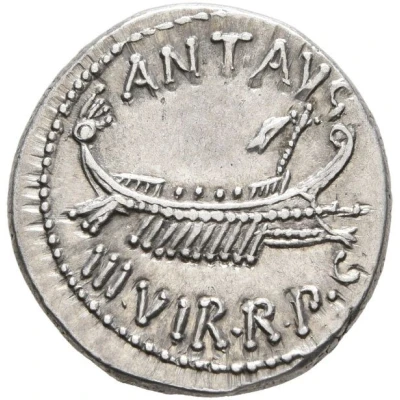
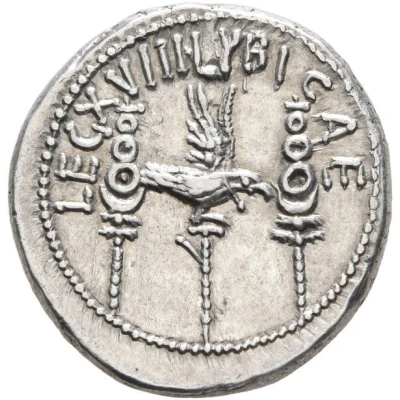

© Leu Numismatik
Denarius - Mark Antony ANT•AVG III•VIR•R•P•C / LEG•XVIII•LYBICAE 32 BC - 31 BC
| Silver | 3.74 g | 17 mm |
| Issuer | Rome › Roman Republic (509 BC - 27 BC) |
|---|---|
| Period | Republic (509 BC - 27 BC) |
| Triumvir | Mark Antony (Marcus Antonius) (43 BC - 32 BC) |
| Type | Standard circulation coin |
| Years | 32 BC - 31 BC |
| Value | Denarius (1) |
| Currency | Denarius of 16 Asses (141 – 27 BC) |
| Composition | Silver |
| Weight | 3.74 g |
| Diameter | 17 mm |
| Shape | Round (irregular) |
| Technique | Hammered |
| Orientation | Variable alignment ↺ |
| Demonetized | Yes |
| Updated | 2024-10-06 |
| Numista | N#384687 |
|---|---|
| Rarity index | 94% |
Reverse
Aquila between two standards. Border of dots.
Script: Latin
Lettering: LEG•XVIII•LYBICAE
Comment
Mass varies: 3.2–3.79 g;Diameter varies: 17–20 mm;
Of the twenty-two legions named on Mark Antony's legionary denarii, only three carried special names along with their numerals, namely the Legio XII Antiquae, the Legio XVII Classicae, and the Legio XVIII Lybicae. They are not to be confused with Octavian's similarly numbered legions and were likely raised on short notice by Antony prior to the clash with his opponent. The name Lybica indicates that its soldiers came from North Africa.
Interesting fact
One interesting fact about this coin is that it features a portrait of Mark Antony, who was a prominent Roman general and politician, and one of the triumvirs who ruled Rome after the assassination of Julius Caesar. The coin was minted during his reign as consul in 32 BC, and it is believed to be one of the first coins to feature a portrait of a living person. This was a significant departure from the traditional Roman coinage design, which typically featured images of gods, goddesses, and other mythological figures. The inclusion of Mark Antony's portrait on the coin reflects his growing power and influence in Rome at the time.
